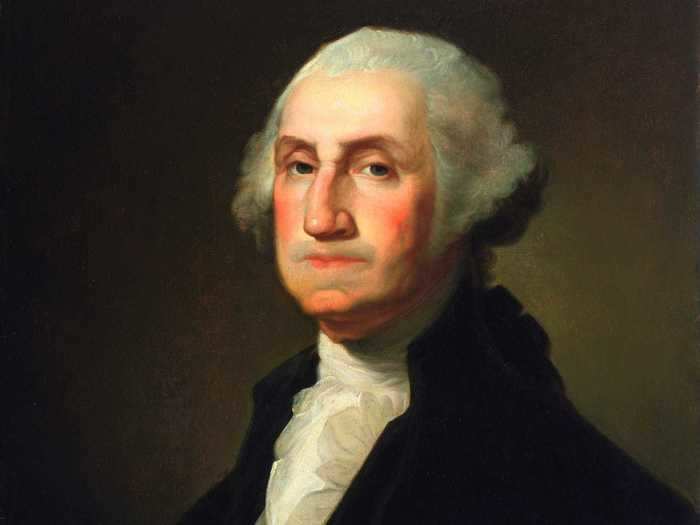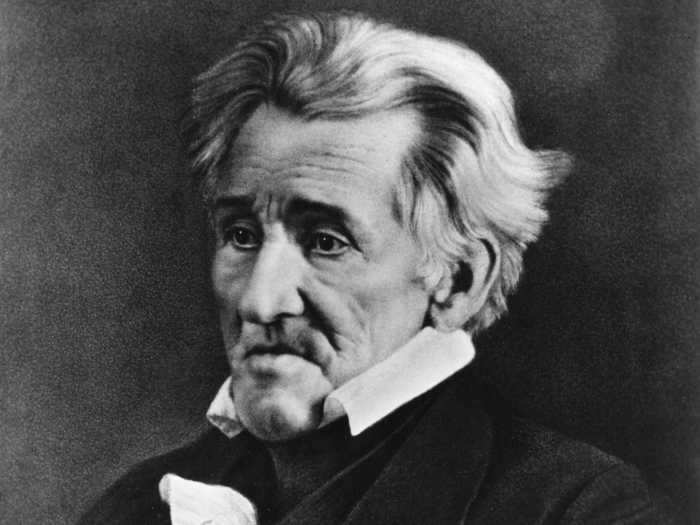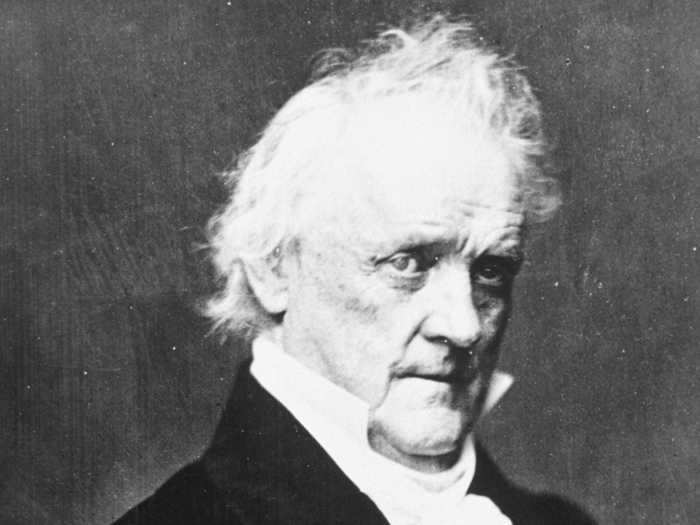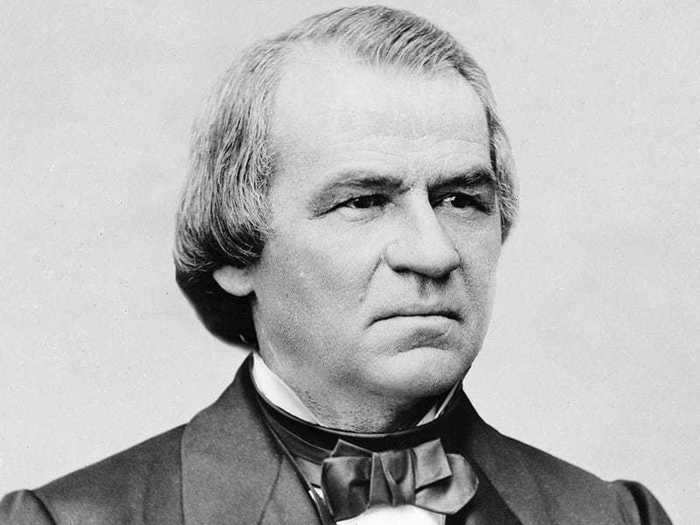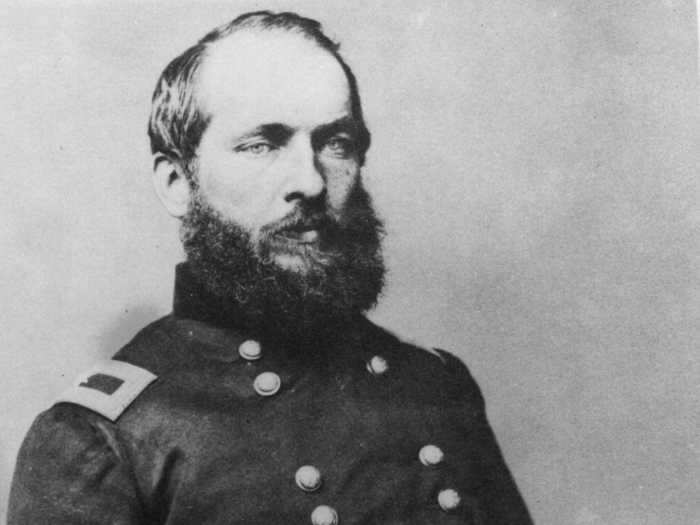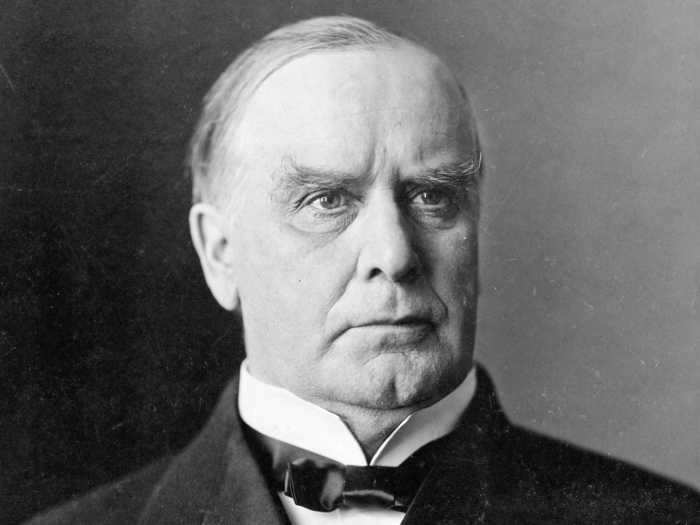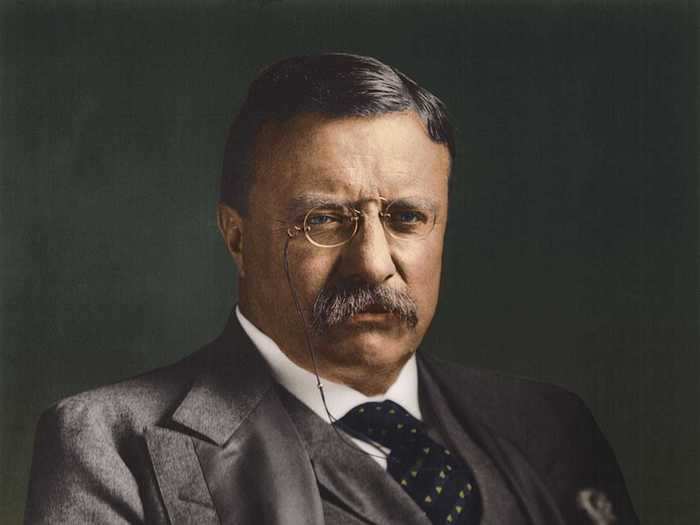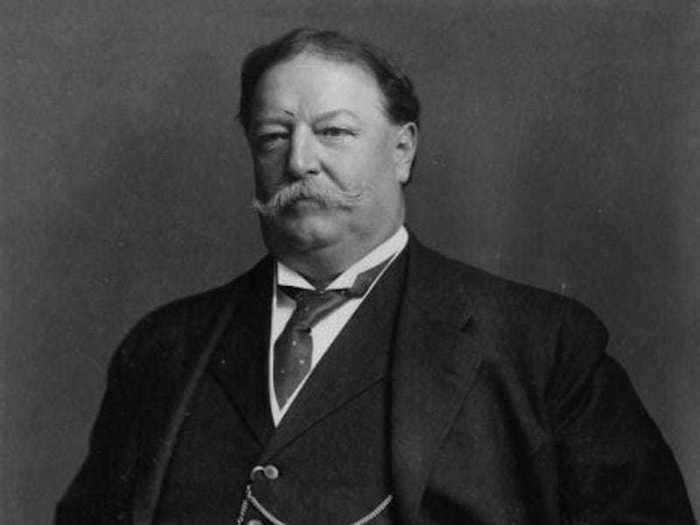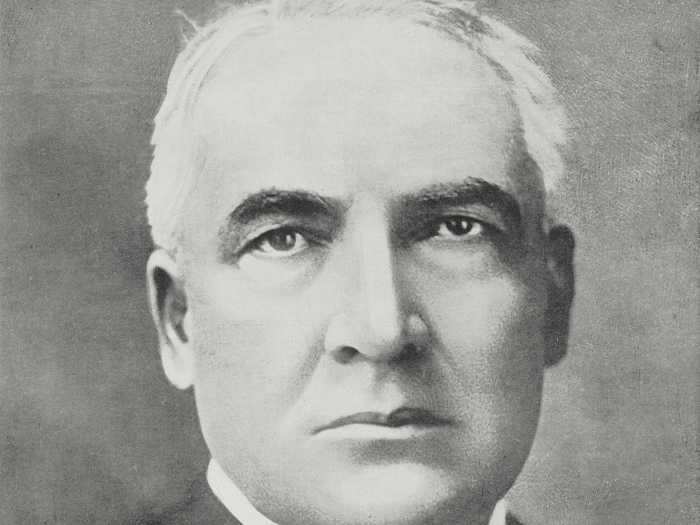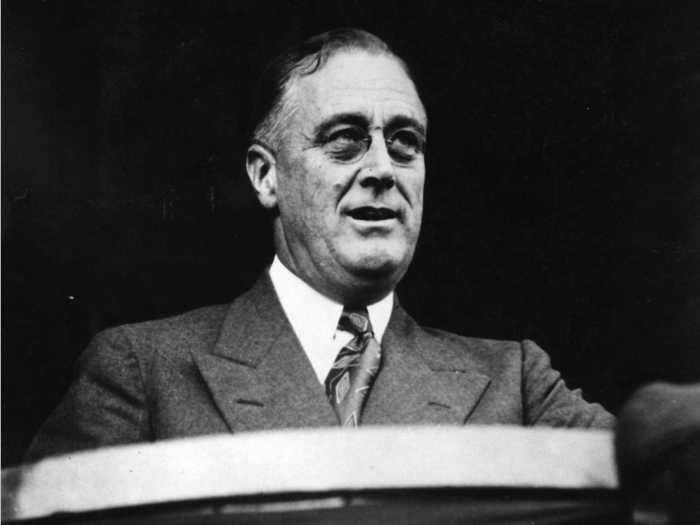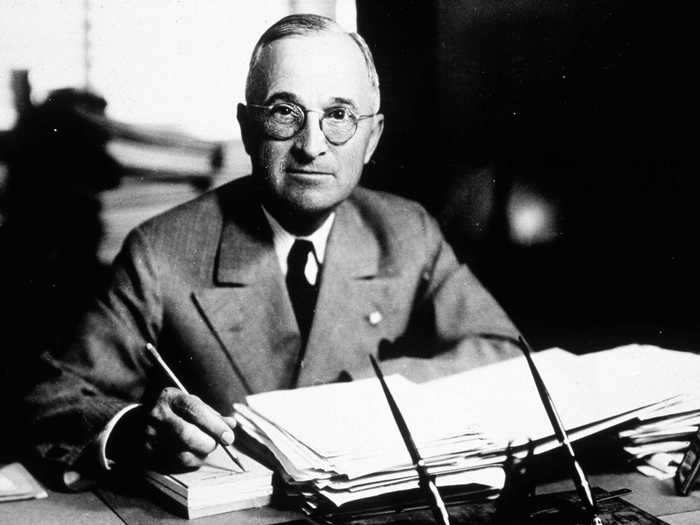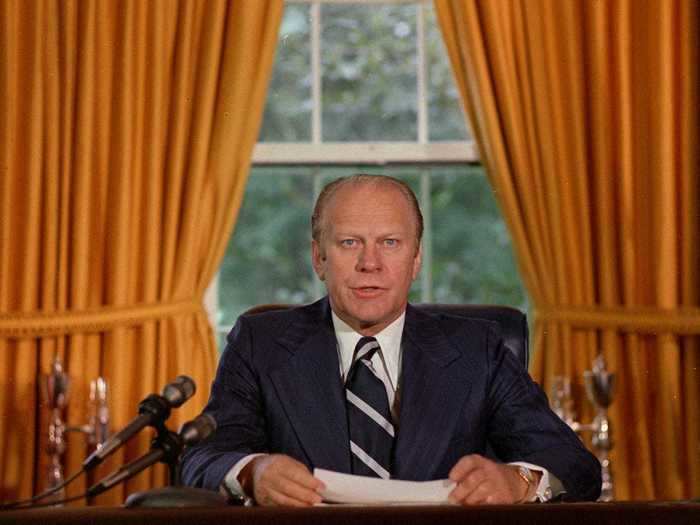President Franklin D. Roosevelt during a campaign stop.Getty Images
- Freemasonry has attracted much speculation — and even a few conspiracy theories — since its inception.
- Numerous United States presidents have been drawn to the all-male secret society throughout history.
- Some presidents, like Harry Truman, say they were able to hone their leadership abilities through their participation in Masonry.
- Others, like Andrew Jackson, attracted criticism for belonging to what was viewed as a strange and elitist group.
Almost a third of the US presidents have been Freemasons.
It's a statistic that sounds straight out of a conspiracy theorist's fever dream (or "National Treasure," at the very least).
Masonic lodges essentially function as combination social clubs, secret societies, and charitable organizations. The fraternal organization has been around since at least the 1700s, likely arising from early modern organizations of stonemasons. Masons themselves trace their roots back to the construction of King Solomon's temple in biblical times.
Today, there are several offshoots of Freemasonry, but the branch that most people would recognize requires that members be men and profess belief in the existence of a deity. Conversations about politics and religion are banned, and a sacred text must be displayed in each lodge.
Candidates must get through three degrees of the craft in order to become Freemasons. First, they are "initiated" as apprentices, then "passed" to the level of fellowcraft, and finally "raised" as full Masons (if the members of the lodge vote them in).
Since the society is ostensibly mysterious and said to partake in ancient rituals, public perceptions about Masons tend to range from fascination to fear. In fact, the first ever third party in US political history ran on the platform of taking down Freemasonry.
Recently, a statue of prominent Freemason — and Confederate general — Albert Pike was toppled and set on fire by protesters on Juneteenth. NBC Washington reports that President Donald Trump personally requested that Pike's statue be returned and put back up in the DC park. Pike was a member of the Scottish Rite branch of Freemasonry; according to Kyley Schultz at WUSA9, he was instrumental in growing the branch.
"That Albert Pike statue is up here only because the Freemasons erected it, and Albert Pike was a Freemason. To the credit of the Freemasons, they joined me in wanting the statue to be taken down and I give them all due credit to that," Congresswoman Holmes Norton told WUSA 9.
So, what drew a grand total of 14 chief executives (15 if you count LBJ, who was initiated but never raised) to become Masons?
Let's take a look at some of their Masonic experiences to find out:
George Washington
Rembrandt Peale (American, 1778–1860), circa 1854. Oil on canvas. The de Young Museum, Fine Arts Museums of San Francisco.
VCG Wilson/Corbis via Getty Images
That's right. The first president of the US also happened to be the nation's first Masonic president.
In Ron Chernow's "Washington: A Life," he notes that the future president may have been attracted to the Masonic Order's adherence to Enlightenment ideals.
Washington joined the Order of the Freemasons early in his life, entering Fredericksburg Lodge No. 4 at the age of 20, according to Mount Vernon's official website. Washington had lost his older brother Lawrence to tuberculosis only a few months earlier, effectively becoming head of the household.
Washington stayed in touch with his Masonic brothers for the rest of his life.
Masonic influences came into play at Washington's first inauguration. During the ceremony, he swore his oath on a Bible from St. John's Masonic Lodge No. 1 in New York (the book, as Mental Floss reports, was randomly opened to Genesis 49:13: "Zebulun shall dwell at the haven of the sea; and he shall be for an haven of ships; and his border shall be to Zidon").
The first president's Masonic ties followed him his entire life — and beyond. There's even a George Washington Masonic National Memorial, which was dedicated in 1932 and finally completed in 1970.
James Monroe
National Archives / Handout / Getty Images
Andrew Jackson
circa 1844: Andrew Jackson (1767 - 1845), the 7th President of the United States of America.
Library Of Congress/Getty Images
Jackson's status as a Mason actually became a major political issue during his presidency.
That's because the first ever third party in US politics formed as part of a backlash against the Freemasons.
As Slate reported, the seeds for the Anti-Masonic Party were first sown in 1826, when Masons were implicated in the (still unsolved) kidnapping of a New York man who threatened to reveal their secret rites. The political party opposed what it perceived as a sinister, elitist, and anti-democratic secret society.
The Anti-Masonic Party found a natural foe in Jackson, who was not only a Mason, but a high-ranked one. Jackson served as the grand master of the grand lodge of Tennessee from 1822 to 1824.
James K. Polk
National Archives / Handout / Getty Images
According to the "Proceedings of the Grand Lodge of Kentucky," the 11th president "was initiated in Columbia Lodge No. 31, Columbia, Tennessee, June 5, passed August 7, and raised September 4, 1820."
He was 25 at the time, and had just been licensed to practice law.
James Buchanan
National Archives / Handout / Getty Images
Andrew Johnson
Andrew Johnson
Library of Congress
In her biography on Johnson, historian Annette Gordon-Reed says that the former president remained a "proud Mason" throughout his life and that "the local Masonic temple played a great role in the funeral proceedings."
James Garfield
Mathew Brady / Stringer / Getty Images
Garfield only served a few months of his presidency before being cut down by an assassin's bullet. He had a lengthier tenure in the Freemasons.
According to the "Proceedings of the Grand Lodge of Kentucky," he "was initiated in Magnolia Lodge No. 20, Columbus, Ohio, November 19, passed December 3, 1861, and raised December 22, 1864. He also received the Capitular and Templar degrees, and those of the Lodge of Perfection in the Scottish Rite."
William McKinley
Former President William McKinley, who was the source of President Donald Trump's "Tariff Man" moniker.
Library of Congress
Theodore Roosevelt
Theodore Roosevelt (1858 - 1919), twenty-sixth president of the United States of America.
Getty Images
The Theodore Roosevelt Center has digitized many of the 26th president's letters — some of which reference his Masonic activities.
President Roosevelt addressed the Grand Lodge of Pennsylvania in 1902 on the anniversary of Washington's initiation. In his speech, he reflected on some of his own reasons for joining the Freemasons:
"One of the things that attracted me so greatly to Masonry, that I hailed the chance of becoming a mason, was that it really did act up to what we, as a government and as a people, are pledged to — of treating each man on his merits as a man. When Brother George Washington went into a lodge of the fraternity, he went into the one place in the United States where he stood below or above his fellows according to their official position in the lodge. He went into the place where the idea of our government was realized as far as it is humanly possible for mankind to realize a lofty idea."
However, Roosevelt also ran into occasional snags with the society. In his letters, he chastised one alleged Mason for attempting to use his position in the society for political advantage (which is against the rules of Freemasonry), and complained about another situation in a letter to a friend, writing that one foe was "endeavoring to use Masonry to my political disadvantage."
After his presidency, Roosevelt wrote about traveling the world and visiting Masonic lodges in Nairobi and the Azores.
William Taft
Archive Photos/Getty
Warren Harding
DE AGOSTINI PICTURE LIBRARY / Contributor / Getty
Harding was first initiated as an "entered apprentice" on June 28, 1901, in Marion Lodge No. 70 in Marion, Ohio.
However, the 29th president of the US wasn't officially raised to the level of Master Mason until 19 years later.
The timing of his acceptance just happened to coincide with Harding's presidential campaign — and subsequent victory.
A paper by Mason and researcher John R. Tester details Harding's long-thwarted quest to rise within the secret fraternal society. Tester theorizes that the reasons for Harding's delayed promotion may have been due to political prejudices or rumors about his black ancestry (most Masonic lodges refused to admit African-Americans for much of US history).
Franklin Delano Roosevelt
Hulton Archive/Getty Images
Roosevelt was first initiated as a Mason in 1911, and later became a grand master in 1934.
The Franklin D. Roosevelt Library and Museum's official blog features several historic materials pertaining to the three-term president's participation in the society.
One excerpt from a 1935 press conference features Roosevelt's account of a Mason-related prank he pulled on then-Securities and Exchange Commission Chairman Joseph Kennedy (the father of future president John Kennedy).
The day after the press conference, Roosevelt conducted a ceremony raising his two sons at the Architect Lodge. Afterwards, the president gave a speech praising the society: "To me, the ceremonies of Freemasonry in this state of ours, especially these later ones that I have taken part in, always make me wish that more Americans, in every part of our land, could become connected with our fraternity."
Harry Truman
Harry Truman.
Getty Images
Truman was very involved with the Freemasons. In fact, the 33rd president helped found a Masonic Lodge in Belton, Missouri, in 1911 and was elected its first master, according to the Truman Library.
The young Missourian was immediately hooked on Freemasonry. The Truman Library also cites some of Truman's letters to his future wife, Bess Wallace, during which he confessed to having "the big head terribly" and warned her that he'd forever "be bragging about having performed that ceremony."
Apparently, Truman's lodge hall burned down while he was serving in WWI, but he continued to rise within the Freemasons throughout the 1920s.
The Truman Library cited one observer's assessment of Truman's leadership abilities in the society: "He did a good job in the lodge work. Excellent. He was an excellent director. If things weren't going right along smoothly, Harry would come in and get them to going. He was a good lodge man."
He eventually became a grand master mason, but ended his role in a "blaze of glory" the next year, while still a US senator.
A few years later, during his presidency, he remained a committed Mason. The New York Times reported that Truman's "only jewelry was a double-band gold Masonic ring on the little finger of his left hand." The Truman Library also reports that in 1945 Truman became the only president to received the 33rd degree of the Supreme Council of the Scottish Rite.
In "Harry S. Truman: His Life and Times," Brian Burnes quotes Truman as writing: "Freemasonry is a system of morals which makes it easier to live with your fellow man, whether he understands it or not."
Gerald Ford
AP Photo
So far, Gerald Ford has been the last Masonic president (that we know about). He was raised to the order on May 18, 1949, in Columbia Lodge No. 3 in DC. Ford was made an honorary grand master of the Order of DeMolay in 1975.
That same year, Ford actually helped preside over the unveiling of the Masonic memorial honoring George Washington.
Ford's speech at the event, which was later published in his public papers, featured some reflections on his own Masonic journey.
"When I took my obligation as a master mason — incidentally, with my three younger brothers — I recalled the value my own father attached to that Order. But I had no idea that I would ever be added to the company of the Father of our country and 12 other members of the order who also served as Presidents of the United States. Masonic principles — internal, not external — and our order's vision of duty to country and acceptance of God as Supreme Being and guiding light have sustained me during my years of government service."
And so, the Masonic history of the US presidency came full circle.

